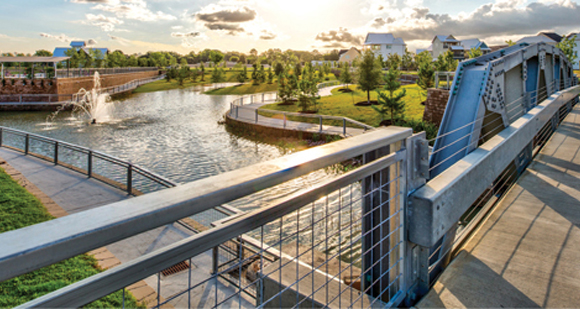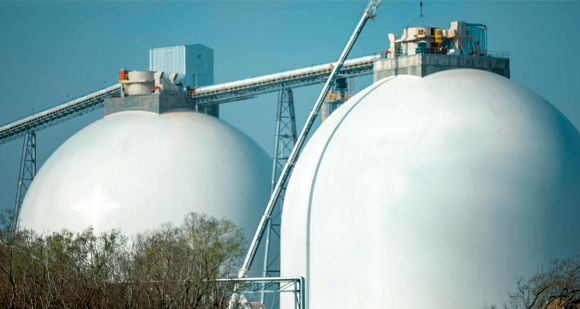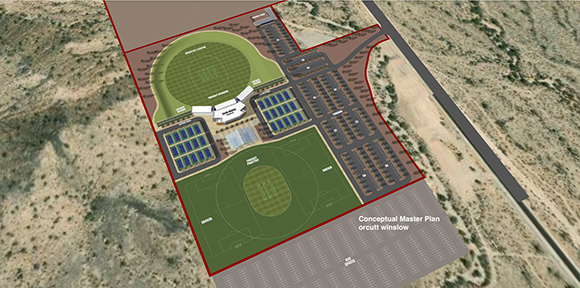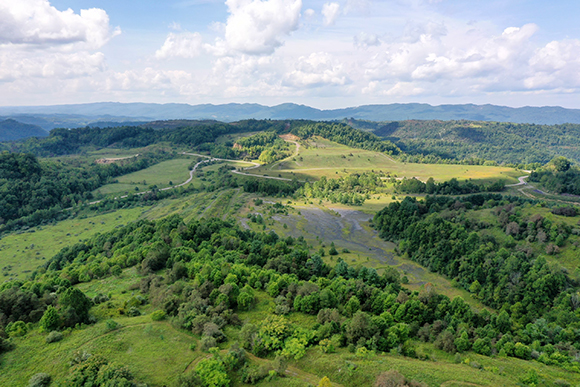|



|
FROM SITE SELECTION
MAGAZINE, July 2022 ISSUE
|

|
OKLAHOMA
Thayer Smith, president of USA Rare Earth, tells Mark Arend why Oklahoma
will soon be home to the Americas’ first rare earth metal and
manufacturing facility, giving the state a head start in the U.S. as
companies bring such operations stateside.
|
|

|
INVESTMENT PROFILE: SPRING BRANCH MANAGEMENT DISTRICT, TEXAS
Spring Branch bears fruit with a rich harvest of expanding companies.
|
|
  |
Tennessee
Cincinnati-based grocery retailer The Kroger Co. announced last week new
spoke cross-dock facilities in Nashville and in the Chicago suburb of
Maywood as the company adds to its national e-commerce network of
automated distribution and delivery facilities operated with Ocado
Group. The 40,000-sq.-ft. facility in Nashville “will work in
conjunction with the Atlanta fulfillment center [located in Forest
Park], increasing the network’s reach to customers up to 200 miles from
the hub,” the company said, while the Maywood facility will coordinate
with a hub fulfillment center in Pleasant Prairie, Wisconsin. Kroger
currently operates other customer fulfillment centers in Monroe, Ohio;
Groveland, Florida; and Dallas, Texas. The fulfillment network plans
additional customer fulfillment centers in California; Frederick,
Maryland; Phoenix, Arizona; Romulus, Michigan (Detroit); Cleveland,
Ohio; Charlotte, North Carolina; Aurora, Colorado (Denver), and in South
Florida and the Northeast. Which likely means new spoke facilities to
come.
Mexico
As reported in Milenio and Inmobiliare, this multimodal logistics
company will invest in the first phase of a major new site in Torreon,
Coahuila, located in the region of northern Mexico known as the
Comarca Lagunera (Region of Lagoons) found in parts of Coahuila
and Durango. The initial facility of nearly 1 million sq. ft. will be
followed by a second phase of nearly 108,000 sq. ft. Alluding to the
region’s growing cluster of companies in logistics and in the electric
vehicle sector, Miguel Ángel Riquelme Solís, governor of Coahuila,
credited his state’s security and rule of law for attracting companies,
in addition to strong relationships with labor and teacher unions, and
the supply of skilled labor.
|
|
 
|
|
2022 MISSISSIPPI
DEVELOPMENT GUIDE
|

|
PORTS & WATERWAYS
Learn straight from Enviva why a deepwater terminal in Pascagoula is a
linchpin for the bioenergy company’s global business plan.
|
|
|
SITE SELECTION
RECOMMENDS
|

|
A new 20,000-seat cricket stadium will soon rise in Buckeye, Arizona,
one of the fastest-growing areas in the country.
Rendering courtesy of The Mangat Group
|
|
Nobody wants their project announcement to yield “[crickets].” But an
ambitious new project in Arizona is planning to yield cricket.
Specifically, land developer The Mangat Group is investing $50 million
in the new 20,000-seat MG Cricket Stadium in the community of Buckeye as
part of the forthcoming Major League Cricket league in the U.S. “While
there are cricket complexes in Los Angeles, Indianapolis, and Pearland,
Texas, MG Cricket Stadium will be the second ICC-Certified cricket
stadium in North America, the first west of the Mississippi, and the
first cricket stadium in the state of Arizona,” Mangat Group stated.
“The only other ICC-Certified stadium is located in Lauderhill,
Florida.” Earlier this year, the company explained, USA Cricket
partnered with American Cricket Enterprises (ACE) to create a
professional US T20 cricket league “that will hopefully lead to the
creation of Major League Cricket across the country.” Yesterday, the
U.S. cricket team lost a third-place match in Zimbabwe to the team from
Papua New Guinea, as the Netherlands and Zimbabwe claimed the final two
spots in the 2022 Men’s T20 World Cup.
|
|

|
Photo courtesy of Dominion Energy and The
Nature Conservancy
|
|
This photo shows an area in southwest Virginia’s Wise and Dickenson
counties that is on the way to transforming from former surface coal
mines to utility-scale solar power. Dominion Energy Virginia and the
Nature Conservancy last September announced their intent to repurpose
1,200 acres of the former Red Onion mine and surrounding properties for
a new 50-megawatt solar power installation. “Southwest Virginia and the
wider Central Appalachian coalfields have an important role to play in
the renewable energy economy,” said Brad Kreps, director of The Nature
Conservancy’s Clinch Valley Program. “Some of the region’s former mined
lands are well suited for solar development and by directing development
towards these areas it will help us conserve the region’s intact forests
for wood products, carbon storage, wildlife habitats, outdoor recreation
and tourism.”
The Highlands Solar project will be developed within the Cumberland Forest Project and surrounding
properties. “Managed by The Nature Conservancy and owned by its
Cumberland Forest, LP impact investment fund, the Cumberland Forest
Project was announced in 2019 and encompasses nearly 253,000 acres of
land in Southwest Virginia, Eastern Tennessee, and Eastern Kentucky,”
the organizations explained last September. “The vast majority of the
property is designated for the protection and restoration of native
forests. However, there are several thousand acres of non-forested,
former surface coal mines that can support solar energy projects and
local economic development with minimal impacts to the environment.”
|
|
|
|

